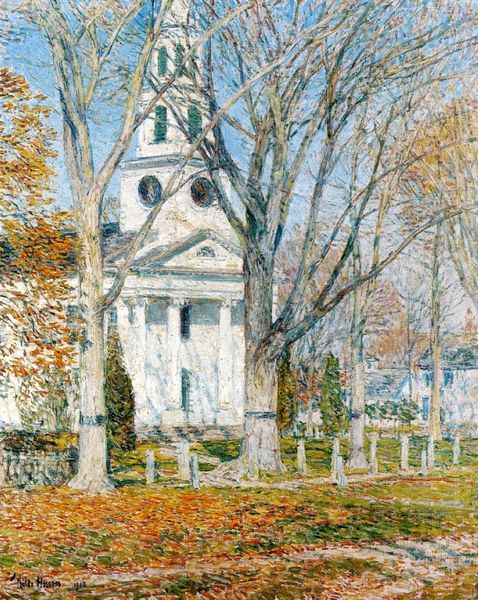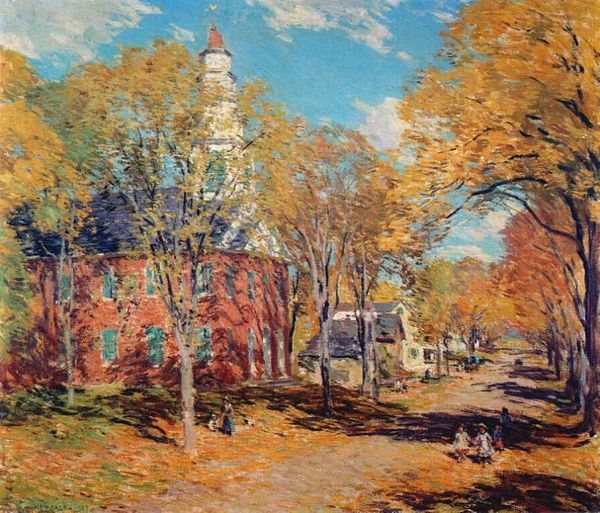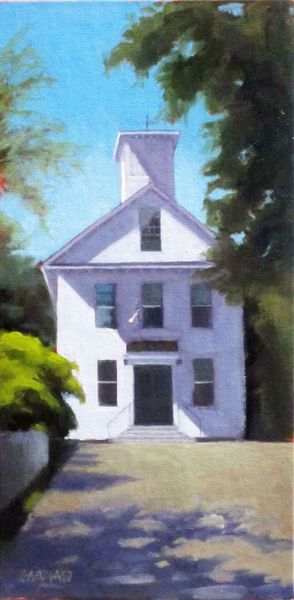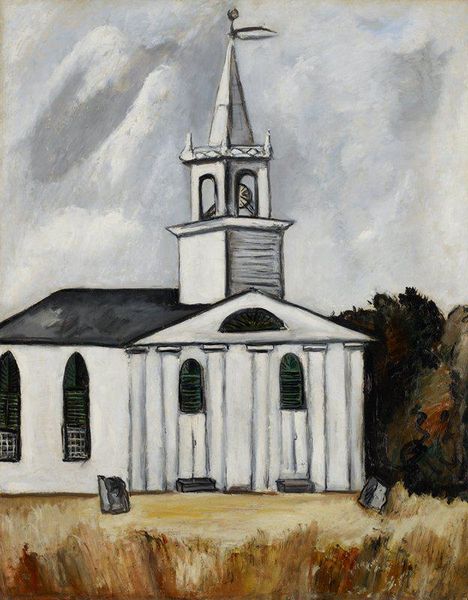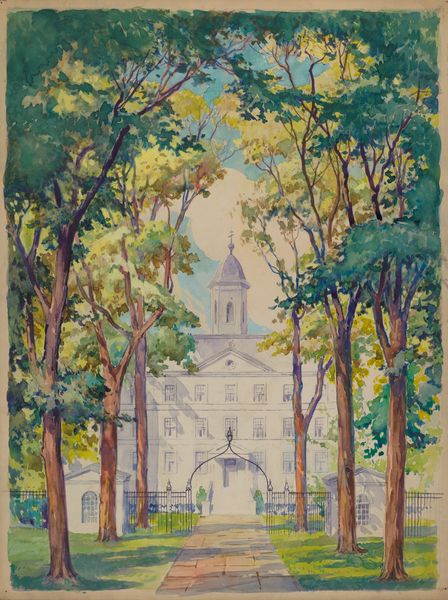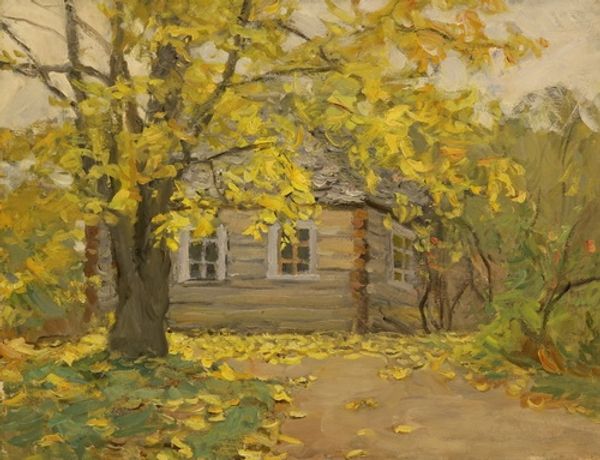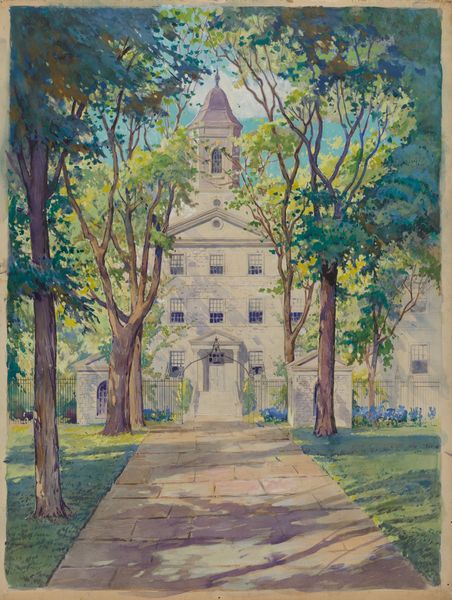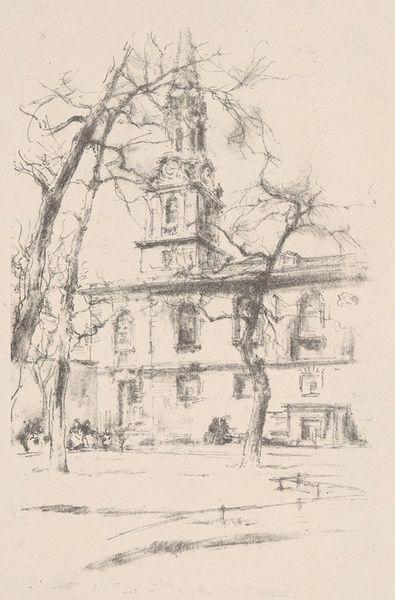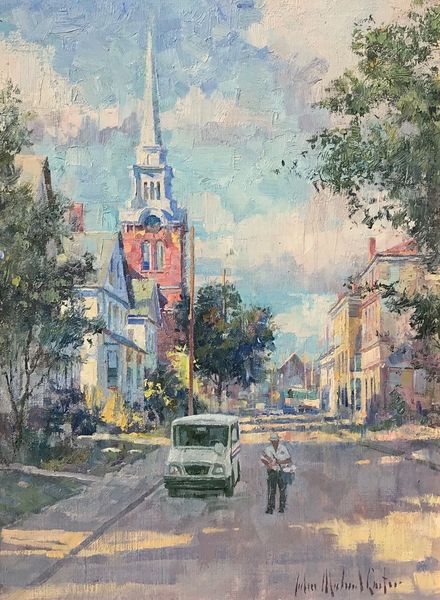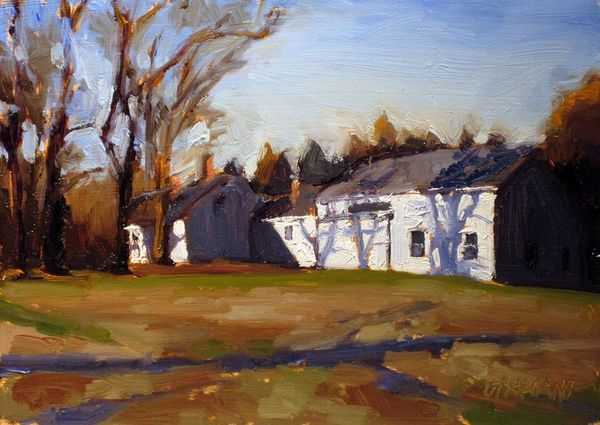
Copyright: Public domain
Curator: Childe Hassam’s "Church at Old Lyme," painted around 1906, is a beautiful example of American Impressionism. Using oil paint en plein air, Hassam captures a vibrant scene in Connecticut. Editor: It's instantly serene. The bright palette and dappled sunlight give it a hopeful, almost nostalgic quality. There’s something inherently comforting about that white church steeple reaching into the blue sky. Curator: The church itself becomes a powerful symbol here. Colonial Revival architecture like this resonated with a growing American consciousness at the turn of the century—a yearning for established roots and traditions amidst rapid industrialization. It became an expression of civic pride. Editor: Precisely! The church, framed by these lush, gold-tinged trees, evokes not just religious devotion but community identity. Look how the artist sets up a deliberate contrast with the verdant trees—a nod to the cycle of life, renewal, and the enduring presence of the church as its constant witness. There is harmony and strength here. Curator: Yes, and that's quite intentional. It places the church firmly in its geographical, socio-economic, and historical location. Old Lyme was, in that era, developing an artist colony, where the presence of Hassam alongside other notable figures enhanced the town's cultural capital. Hassam himself took a leading role as a proponent of Impressionism within that social sphere. Editor: Beyond just location, I feel it's also invoking a certain ethos, what's considered foundational to rural American society and history: community, faith, and the enduring allure of tradition. The church stands as a beacon—a monument that tells a silent story about its inhabitants' values. Curator: Absolutely. This artwork also became part of larger art market forces shaping American Impressionism’s popular appeal. Think about the way idealized visions of small-town life circulated through galleries and private collections. Editor: Looking at this work provides such a peaceful respite and a fascinating perspective. Curator: Indeed. Hassam’s impressionistic view and attention to the church gives a strong insight into a particular period and its cultural touchstones.
Comments
No comments
Be the first to comment and join the conversation on the ultimate creative platform.

